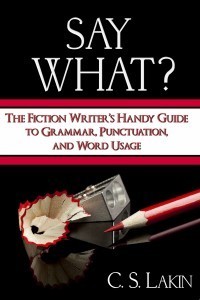Elizabeth Spann Craig's Blog, page 141
February 18, 2014
Assessing Pros and Cons of Outlining
By Elizabeth S. Craig, @elizabethscraig
It must have been 2011 when I was first asked to write an outline of a book for an editor. At that point I’d written four or five books with no outline at all and the request completely freaked me out, although I tried not to let on. I handed in an outline that was something like 20 pages long and probably took me as long to write as a book would have.
At that point, I decided I’d outline just that series, just for that editor (Southern Quilting Mysteries) and use my regular, organic process for my Memphis Barbeque series (Penguin, but different editor) and my Myrtle Clover series (self-pubbed).
That was when some sort of curse kicked in. I managed to mangle an organic draft of Rubbed Out (Memphis book 4) and Body in the Backyard (Myrtle Clover book 4) immediately after that. They were riddled with plot holes, inconsistent characters, lack of motivation…a real mess. Rubbed Out was a particular emergency since I had very little time to fix it. I scrapped what I’d written, sketched out a very rough outline for the rest of the story, and pull a successful book out of it. Body in the Backyard took so long to fix that I decided I was giving up on being a pantster. It was a good run. I’d had fun. But with my crazy production schedule, I’d left myself no room for error. That was basically it…I didn’t have time to screw up now.
So now I’m counting the books I’ve outlined. I think I’m at eight books now. And yet…I still have a love-hate relationship with it. Am I more efficient, though? Without question. I was plenty efficient when I could organically write an organized, logical first draft by making it up as I went along. The problem was that I couldn’t count on my ability to do that.
I think the last time I assessed this outlining process was last May. Some of the things I discovered then are the same…but I’ve made some additional discoveries, too. Some good, some bad.
Unexpected Benefits to Outlining:
The ability to pick immediately back up after taking a break from a book. I went to Africa this summer and then came back to a hospitalized family member. And I picked right back up with my project without missing a beat.
Speed when jumping between series (gained only if outlining immediately after finishing a book in that series).
Clarity of story arc, character arc, and (purely for mystery writing) more methodical placement of clues and red herrings.
I start the book with a better understanding of who the characters are.
I actually get a better sense of what subplots would work with the story before I start (I don’t usually include subplots on my outlines…don’t pass them by the editor, either).
I haven’t run into plot holes since starting to outline.
Cover designer and copywriters can come up with back cover copy and covers (trad pub and self pub) before I’ve even finished the book. (This does mess with my head a little, but it’s still a benefit).
Unexpected Problems When Outlining:
Writing short. I mentioned this last May and it hasn’t fixed itself. I write so short when I outline. Ridiculously short. I frequently have to add 5,000 words or more.
Stilted scenes occasionally…characters, dialogue, entire scenes will read flat and have to be fluffed up later.
Sometimes…a bit of the spark is gone for me as I write. It’s not quite as fun. I can be less enthusiastic about sitting down at the computer.
The important thing to remember when we’re thinking about our processes is—do what works for us. Who cares what other people are doing? But…have you found your ideal process yet? So, are you a pantster? Outliner? Have you ever switched? What are your thoughts?
The post Assessing Pros and Cons of Outlining appeared first on Elizabeth Spann Craig.
February 16, 2014
Ask Questions to Find Your Story
I ask a lot of questions in my line of work as a professional manuscript critiquer and copyeditor. Sure, I also give a lot of suggestions and fix badly constructed sentences. But it’s the questions that get to the heart of the story. Asking authors questions helps them get thinking about what they’re writing and why.
So much important information seems to be missing in so many novels—especially first novels by aspiring authors. Novel writing is tricky; there are countless essential components that all need to mesh cohesively. To me, the key to reaching that goal is to ask a lot of questions.
Questions Create Story
Starting a novel is asking a question. What if . . .? What would someone do if . . .? What if the world was like this and this happened . . .? Then those initial questions lead to more questions, which shape and bring life to characters and story. Questions are the key.
Thousands of hours of critiquing and editing has led me to notice that there are some questions I seem to ask a lot. Which tells me there are some general gaps that many writers have in common in their novel-constructing process. I thought I’d share these questions, because maybe they’ll help you as you work on your novel.
1) Where is this scene taking place? I shouldn’t have to ask this, right? The writer is thinking, Isn’t it obvious? I know where this scene is taking place.
It may surprise you to know that readers can’t read your mind. The biggest problem I see in novel scenes is the lack of sufficient information to help the reader “get” where a scene is taking place. Just a hint of setting, shown from the character’s point of view, can do wonders. And what’s usually missing is not just the locale but the smells and sounds, a sense of the time of day and year, and exactly where in the world it is.
2) How much time has passed? So many scenes dive into dialog or action without clueing the reader in on how much time has passed since the last scene. Scenes needs to flow and string together in cohesive time. It’s important to know if five minutes or five months has passed, and it only takes a few words to make that clear. Don’t leave your reader in confusion—that’s a bad thing.
3) What is your character feeling right now? This is a biggie. It alternates with “How does your character react to this?” So many times I read bits of action or dialog that should produce a reaction from the POV character, but the scene just zooms ahead with said dialog or action without an indication of what the character is feeling or thinking. For every important moment, your character needs to react. First viscerally, then emotionally, physically, and finally intellectually. If you get hit by a car, you aren’t going to first think logically about what happened and what you need to do next. First, you scream or your body slams against the sidewalk and pain streaks through your back. Keep this adage in mind: for every action, there should be an appropriate, immediate reaction. That’s how you reveal character.
4) What is the point of this scene? This is a scary question. Not for me—for the author. Because if there’s no point to a scene, it shouldn’t be in your novel. Really. Every scene has to have a point—to reveal character or plot. And it should have a “high moment” that the scene builds to.
5) What is your protagonist’s goal for the book? If she doesn’t have a goal, you don’t really have a story. The reader wants to know your premise as soon as possible, and that involves your main character having a need to get something or somewhere, do something or find something. That goal should drive the story and be the underlayment for all your scenes. That goal is the glue that holds a novel together. It may not be a huge goal, and in the end, your character may fail to reach that goal—you’re the writer; you decide. But have a goal.
I actually ask a whole lot more questions than these. And many are just as important to crafting a powerful novel. I’ve found when writing my own novels that if I just keep asking questions—the right ones—I’ll find just the right answers for that story.
If you can get in the habit of continually asking questions as you delve into your novel, you may find it will lead you to the heart of your story.
 C. S. Lakin is a multipublished novelist and writing coach. She works full-time as a copyeditor and critiques about two hundred manuscripts a year. She teaches writing workshops and gives instruction on her award-winning blog Live Write Thrive. Her new book—Say What? The Fiction Writer’s Handy Guide to Grammar, Punctuation, and Word Usage—is designed to help writers get a painless grasp on grammar. You can buy it in print here or as an ebook here.
C. S. Lakin is a multipublished novelist and writing coach. She works full-time as a copyeditor and critiques about two hundred manuscripts a year. She teaches writing workshops and gives instruction on her award-winning blog Live Write Thrive. Her new book—Say What? The Fiction Writer’s Handy Guide to Grammar, Punctuation, and Word Usage—is designed to help writers get a painless grasp on grammar. You can buy it in print here or as an ebook here.
Connect with her on Twitter and Facebook.
The post Ask Questions to Find Your Story appeared first on Elizabeth Spann Craig.
February 15, 2014
Twitterific Writing Links
by Elizabeth S. Craig, @elizabethscraig
Twitterific links are fed into the Writer’s Knowledge Base search engine(developed by writer and software engineer Mike Fleming) which has over 23,000 free articles on writing related topics. It’s the search engine for writers.
Again, still struggling with downloading my scheduled tweets so my apologies for any repeats, missed links, etc. Hoping HootSuite can fix this issue soon.
Have a great week!
Books Become Decoration As E-Readers Take Over http://ow.ly/toVn1 @NewYorkObserver
10 Pro Tips for Writers Using Social Media: http://ow.ly/toWfr @mattpetronzio
What If the Writers Don’t Listen to Editorial Direction? http://ow.ly/tnKtd @ErinMFeldman
Backmatter: Are You Making the Most of Your Digital Shelf Space? http://ow.ly/tnKtP @courtneymilan
Traditional Publishers Forming Communities: http://ow.ly/toTfp @marygkeeley
10 Reasons Why Living the Writer’s Life Will Drive you to Drink: http://ow.ly/toVW9 @DanaLeipold
Is Outlining for Hacks? http://ow.ly/toT7h @mythicscribes
How many characters should a novel have? http://ow.ly/tnKb2 @standoutbooks
GoodReads Strategies to Increase Sales: http://ow.ly/tnJH0 @christinenolfi
Marginalia: The Meaning in the Margins: http://ow.ly/toSdk @fullstopmag
How to Organize Writing Ideas Using Binders: http://ow.ly/tnJSd @theWritingHabit
Is the literary world elitist? – Salon.com http://ow.ly/toXQL@magiciansbook
A Newbie’s Guide to Self-Publishing: http://ow.ly/toSqY @JulieMusil
An eye-opening publishing report–and a call for writers to organize: http://ow.ly/tB2qK @HughHowey @Porter_Anderson
How to Become a Frighteningly Good Writer: http://ow.ly/toWkz @DavGit
Overcoming Object Love: How to Write Female Leads Who Are People: http://ow.ly/toX3j @_RobbieBlair_
5 Big Screenwriting Mistakes, 5 Big Fixes: http://ow.ly/toVyu @Scriptshadow
5 Suggestions to Create an Opening That Works: http://ow.ly/tnKev @lesliemillernow
Ebooks, Paper Books, or Both: Finding the Solution that is Right for You | Wise Ink’: http://ow.ly/tl8aX
Why You Should Throw a Wrench In Your Editing Routine http://ow.ly/tj1YI @michaeldlukas
The Best Quotes From Oscar Wilde on Writing and Creativity: http://ow.ly/tl6QC @hubspot
The best fiction featuring real writers: http://ow.ly/tl923 @guardianbooks
Best Bookstores In The World 2014: http://ow.ly/tl7v7 @businessinsider
How to create value with a new thing (book apps): http://ow.ly/tl8A4 @fakebaldur
Ask The Agent: How to Perfect Your Pitch & The Low-Down on Agency Assistant Salaries: | LitReactor http://ow.ly/tl77g @breeogden
4 Questions Every Book Proposal Must Answer (to Interest an Editor!): http://ow.ly/tl9d6 @PubSmartCon
The 6 Commandments of Starting the Editing Process: http://ow.ly/tl6Z5 @Bpoelle @rahdieh
Amazon’s 100 books you need to read to live a literary life: http://ow.ly/tj1lB @cbcbooks
The Value of ARCs: http://ow.ly/tl8PV @alexbracken
6 Quick Tricks to Help You Tighten Up Your Writing: http://ow.ly/tl72e @livewritethrive @ADDerWORLD
Let This Periodic Table Of Storytelling Destroy Your Writer’s Block: http://ow.ly/tl7j6 @Gizmodo
6 Steps to Effective Writing: http://ow.ly/tl6Ol @SAlexM23
Writer’s Block, Deconstructed: http://ow.ly/tl9hl @lesliemillernow
A Tiny Scrap of Paper Offers a Glimpse Into Jane Austen’s Inspiration: http://ow.ly/tl8Fn @RachelNuwer @SmithsonianMag
What is story filler and how much is necessary? http://ow.ly/tl6AN @standoutbooks
4 Questions to Ask About Each Draft: http://ow.ly/tj26H @LizColeyBooks
7 Top eBook Blog Tour Sites: http://ow.ly/tj1dZ @gpstberg
Writing Space + Writing Routine = Progress: http://ow.ly/tq2fA @jeannevb @scriptmag
How to Create a Navigational Table of Contents in Your Ebook : http://ow.ly/tq2jQ @lisaSmason
5 Ways To Fall In Love With Your Character: http://ow.ly/tq2n1 @writermya
Supplementing Your Publisher’s Efforts: What You Can Do to Support Your Book http://ow.ly/tq2r8 @ElisabethWeed @writerunboxed
Passive Marketing (Discoverability): http://ow.ly/tq2vi @kristinerusch
Nonfiction: What You Should Know About Traditional Publishing Deals: http://ow.ly/tq2EN @NonfictionAssoc
The Inciting Incident vs The Call To Adventure: http://ow.ly/tq2NC @woodwardkaren
How To Help An Author (Beyond Buying the Book): http://ow.ly/tq2ZP @jenmalonewrites
Diagnosing Problem Stories http://ow.ly/tq39l @janice_hardy
Writing Female Characters & Archetypes: http://ow.ly/tq3d1 @dannymanus. @scriptmag
When Famous Author Promos Backfire: http://ow.ly/tq3jW @PegBrantley @LJSellers
Tips for increasing Twitter engagement: http://ow.ly/tq3ql @davgit
6 mindsets you have to dominate to become a freelancer: http://ow.ly/tq3xq @kotyneelis
The Biggest, Most Beloved Screenplays With the Simplest Mistakes http://ow.ly/tq3L6 @Eat_Sleep_TV @rejectnation
When starting with self-pub isn’t satisfying: http://ow.ly/tq40G @HughHowey
Scam-Spotting 101 | Indies Unlimited http://ow.ly/tq4au
Write Your Novels Faster: Quickly Editing and Proofing Your Novel: http://ow.ly/tresh @gpstberg
People-Powered Publishing Is Changing All the Rules http://ow.ly/trcoz @amymaeelliott @mashable
How to Cope If You Physically Can’t Write: http://ow.ly/trcz0 @zoeyclark
Why Gut Feelings Are a Writer’s Secret Weapon: http://ow.ly/trcJc @KMWeiland
Tips for those struggling with New Year resolutions: http://ow.ly/trdFG @HeatherGKelly
7 Ways to Create a Killer Opening Line For Your Novel: http://ow.ly/trdIq @BrianKlems @writersdigest
An exercise for finding your voice http://ow.ly/trdOQ @rfwriters
Book Marketing: How 4 Authors Are Finding Success With Social Media http://ow.ly/trdVQ @AndyMeekTN
Key Elements to Writing an Effective Synopsis http://ow.ly/trdXw @JordanDane
5 Tools for Building Conflict in Your Novel: http://ow.ly/tre5U @jamesscottbell @writersdigest
Fusing Action and Reaction Scenes Together: http://ow.ly/trebj
Writing a full novel after having sold it on proposal: http://ow.ly/tregZ @jennablack
Tying Your Plot Together: http://ow.ly/treAM @mythcreants
25 Lies About Publishing: http://ow.ly/trePw @DelilahSDawson
Do You Own Your Copyrights? http://ow.ly/treRB @susanspann
4 Things to Remember Before Crowdfunding Your Book: http://ow.ly/trf4w @publisherswkly
10 Ways to Get Writing: http://ow.ly/trf7c @HazelGaynor @womenwriters
11 Ways To Become an Early Riser (and Work in Time to Write): http://ow.ly/trf9O @MissJonesAndI
When to Hire a Professional: http://ow.ly/tstz9 @SpunkonaStick
How 1 single mom writer is responding to reader demands to write faster: http://ow.ly/tthsO @authorcassialeo
Why Novellas are Hot and How to Write One: http://ow.ly/ttgYm by Pul Fahey for @annerallen
How to build a fictional world: http://ow.ly/ttgeW @TED_ED @KateMessner
How to Get Reviews for Self-Published Books: http://ow.ly/tthaD @jfbookman
Writing Reality: Using Synaesthetic Imagery: http://ow.ly/ttjjP @Raishimi
What 1 writer has learned in the 2 years since his book deal: http://ow.ly/ttgEq @saskatoonauthor
Why self-publishing is the best choice for non-fiction books: http://ow.ly/ttfIw @amyshojai
Romance Novels Sweep Readers Off Their Feet With Predictability : http://ow.ly/ttinB @NPR
3 Goals for Every Character: http://ow.ly/ttfTI @mooderino
Manage Your Expectations, Indie Authors: http://ow.ly/ttfZz @RachelintheOC
8 Character Archetypes of the Hero’s Journey: http://ow.ly/tti13 @mythcreants
Writer Beware: PublishAmerica Is Now America Star Books: http://ow.ly/tthfQ @victoriastrauss
Got no writing ideas? Here’s 11 reasons why: http://ow.ly/ttiPb @mikestiles
Being a writer is hard–whether you choose trad pub or self-pub: http://ow.ly/tthKN @jimchines
Infographic shows the most common problems in screenplays: http://ow.ly/ttg4Z @io9
Is that really a publishing offer? http://ow.ly/ttfMQ @nailyournovel
Nonfiction Submission Tips: http://ow.ly/ttgz3 @ChuckSambuchino
The Literary Elitism Question | Issues on the #Ether http://ow.ly/tvzrN @EleanorCatton @Porter_Anderson @magiciansbook
How to Wreck Your Book Club in 9 Easy Steps: http://ow.ly/tvHLl @PasteMagazine
How to Make Turning Points Drive Arcs and Themes: http://ow.ly/tvHSe @jamigold
Planning to Exhibit at a Book Fair? 15 Tips: http://ow.ly/tvIgh @111publishing
1 Writer Reports on Spending A Week Getting Up At 5AM: http://ow.ly/tvIua @sarasaradee @xoJanedotcom
Some readers experiencing issues with Amazon’s review system: http://ow.ly/tvIPq @Brit_Blaise
4 Ways to Become a Better Writer, Even If You’re Short on Time” http://ow.ly/tvJld @thewritelife
7 Steps to a Successful Signing: http://ow.ly/tvJwd @amiekaufman
5 Ways We Neglect Our Own Creativity–And How to Bring It Back: http://ow.ly/tvJVp @janeporter00 @FastCompany
Be sure to keep characters in character: http://ow.ly/tvKm9 @SEvanTownsend
Making Romance Epic – 5 Tips for Writers http://ow.ly/tvKGF @mythicscribes
Traditional vs. independent publishing: production & sales timelines http://ow.ly/tvKSS @chrisrobley
Tips For A Long Term Writing Career And Writing Historical Fiction With Colin Falconer: http://ow.ly/tvKYm @colin_falconer
Use What You’ve Got—Learning to Write in Bits & Pieces of Time: http://ow.ly/tvLhp @EdieMelson
How To Market Your Book On A Shoestring: http://ow.ly/tvLEJ
The Value of Clocking In Time and Words: http://ow.ly/tvLIH @jodyhedlund
Avoiding Bad Punctuation Breaks in eBooks: http://ow.ly/tvM5n @ePUBSecrets
How Independent Publishers Do More With Less: http://ow.ly/tvMen @PublishersWkly
Readers don’t need retail/publisher silos and DRM: http://ow.ly/tvNrO @naypinya
A range of reactions to the @AuthorEarnings report from @HughHowey: http://ow.ly/tCNVS @Porter_Anderson
The post Twitterific Writing Links appeared first on Elizabeth Spann Craig.
February 13, 2014
Genre-Blending—Adding Elements of Another Genre to Our Story
By Elizabeth S. Craig, @elizabethscraig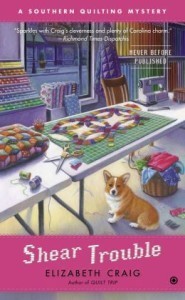
Last year, I received a contract extension for my Southern Quilting mysteries—Penguin wanted two more books. So I knew that the series would last through 2015 and then would be up for consideration again. I started writing the book that’s coming out this August, Shear Trouble.
I was about to work on subplots for the story when I got an email from a reader in South America. She’s what many writers call a “True Fan.” True Fans have been defined by former Wired editor Kevin Kelly as:
“A True Fan is defined as someone who will purchase anything and everything you produce. They will drive 200 miles to see you sing. They will buy the super deluxe re-issued hi-res box set of your stuff even though they have the low-res version. They have a Google Alert set for your name. They bookmark the eBay page where your out-of-print editions show up. They come to your openings. They have you sign their copies. They buy the t-shirt, and the mug, and the hat. They can’t wait till you issue your next work. They are true fans.”
It’s said that you only need 1000 True Fans to be a long-term success. So when True Fans write me (and frequently, they’re the only ones who write me), I pay attention. She said some nice things about my books, being extremely specific about the elements she liked. And then she stated that “it feels that it’s time for Beatrice to start dating Wyatt.”
Beatrice is my sleuth, my protagonist in the Southern Quilting mysteries and her friend is Wyatt. I have been moving their relationship along very slowly. I don’t consider myself particularly adept at writing romance and I’d originally thought of their story as a subplot that was somewhat incidental to the mysteries. But my editor keeps reminding me that, as writer Jeff Cohen put it, the “The crime is the bait; it’s what Alfred Hitchcock called “the MacGuffin,” something the people in your book are desperate about but the reader should find secondary. Your characters are first.”
This was the first of a couple of messages I received from readers regarding Beatrice and Wyatt.
So…I needed a subplot. My readers wanted a romance. I set about figuring out how to make it work and making sure that it would work so that it would be the best thing for the story. I’d uncovered some interesting posts in the past on genre-blending.
Writer Nicola Morgan had three questions to ask when considering genre-blending:
1. Are the lovers of one genre likely to want to read the other genre at the same time?
2. Is it possible that many lovers of one really don’t like the other? Enough to be put off?
3. And, if so, are the dissenters likely to scupper the chances of your cross-genre book by simply not buying it?
Mystery and romance are commonly mixed together—in everything from police procedurals to cozy mysteries, so no problem there. And readers were clearly asking…actually asking, yes…for this subplot to proceed.
Writer’s Digest also had a helpful article by writer Michelle Richmond: “How to Write and Sell a Cross-Genre Novel.” Her three points:
“Recognize your primary genre—and use it as your compass.
Draw on your strengths as a writer, regardless of genre.
Create characters that defy genre conventions.”
So I knew my strengths as a writer and I knew what I was experienced at writing. I was interested in branching out a little and didn’t mind trying something new as long as it didn’t mean I was going to fall on my face while doing it or ruin a mystery.
That’s when I decided to, yes, have the characters start functioning as a couple—but also use that relationship as a way to build tension and conflict and even humor into my story. That’s what I’m better at writing. That’s what I was more confident I could pull off.
I wrote in the subplot and turned the manuscript over to my editor. I’m curious to see if she thinks what I wrote worked—I did end up feeling good about it and how the storyline meshed with the mystery. Ultimately, it will be up to the readers to decide if I hit all the right notes.
I honestly think that most books do genre-blend…at least to a small degree. What elements of other genres have you added to your books? How did you integrate them seamlessly into your story?
The post Genre-Blending—Adding Elements of Another Genre to Our Story appeared first on Elizabeth Spann Craig.
February 11, 2014
Choosing Our Mystery’s Murderer
By Elizabeth S. Craig, @elizabethscraig
Mystery writers that I’ve met tend to fall into a couple of different groups—writers who have picked their killer before they start writing their story (or early in their draft) and those who decide by the end of the book who the killer will be.
I’m a fan of picking my murderer at the end of the book. The only problem is the fact that I’ve (fairly recently) started outlining. When I outline, I lay out the murderer…but I leave it open to change. For my Penguin books, however, the outline goes to my editor so that she has an opportunity to weigh in. I’ve changed the killer a couple of times for my editor and once I dramatically changed a character’s personality and manner in order to keep the character as the murderer.
My editor and I agree that we want the murderer to be a surprise to as many readers as possible. Although some readers always seem to guess the killer’s identity.
My considerations when choosing the murderer:
Will the readers guess this killer easily?
Does this choice make sense? Is the motive believable enough?
Are there enough clues pointing to this choice to keep the mystery fair?
Does this character play a big enough role in the book to make the mystery fair?
Even if the answers to one or more of these questions is no, I might venture ahead with my plan—but I’d make revisions to make it work. I can ramp up the motive or add an additional motive. I can tweak the character’s personality to make it seem as though he has a quick temper or is especially sensitive to criticism, or is overprotective of family members. I can add clues and distract from those clues. And I can add scenes to make the character play a larger, more vital role in the story.
I’ve usually already included one surprise earlier in the book—I murder the most likely suspect halfway through the book. Out of my 4 or 5 suspects, one ends up dying and another will be the murderer. I throw out red herrings to suggest other suspects as the murderer and work to make the red herrings fair instead of frustrating. I have the sleuth recognize them as false leads before going on too long.
Another (large) red herring can be made by misstating the true motive in the case. Maybe your sleuth has been focused on financial gain but the real motive is revenge. Or a crime of passion. Or misplaced self-defense. This can be a useful way to distract attention from your murderer.
Reasons I’ve changed a murderer for my editor:
I changed the murderer once because my editor felt the killer (the victim’s husband) was the most-likely choice. Sadly, in real life most people are killed by those closest to them.
I’ve changed a murderer once because my editor felt the character was too unlikeable…and that readers would guess she was the killer because they wanted her to be the killer.
It might sound difficult to have to change the killer (especially in a completed draft, which I’ve done on several occasions), but it isn’t. After all, all the suspects have equal motive, means, and opportunity…I just shift elements around so that the red herrings become clues. And, for that to happen, I need to drop the clues more carefully than I did the red herrings. So I might have a distraction occur in the scene right after placing the clue—maybe there’s an argument between two other characters. Maybe the sleuth immediately discovers a red herring that she thinks is much more important than the real clue she just stumbled across. Maybe there’s even another dead body. At any rate, switching the killer is a pretty easy fix.
If you write mysteries, have you ever changed the murderer’s identity? How do you select the killer for your books?
Image: MorgueFile: Pippalou
The post Choosing Our Mystery’s Murderer appeared first on Elizabeth Spann Craig.
February 9, 2014
When to Hire a Professional
by L. Diane Wolfe, @SpunkonaStick
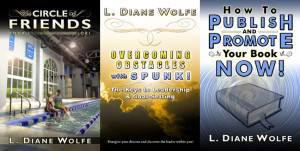 Self-publishing has become a very attractive venture for writers these days. It’s now much easier to send a book out into the world without the help of a publisher.
Self-publishing has become a very attractive venture for writers these days. It’s now much easier to send a book out into the world without the help of a publisher.
When you self-publish a book, you take on a whole new role – business owner. All of the duties and responsibilities of a publishing house now fall on your shoulders. Some of these things an author can do with the proper skills and training. Often time is a big factor, and when you are a one person band, there’s only so much you can do.
It’s important to know when to hire a professional. It can make the difference between a shoddy book and a great book. Because it doesn’t matter how great you are as a writer – if everything else is second rate, no one will buy your book.
There are a few areas where you need to weigh the pros and cons – do you do it yourself or hire a professional:
1 – Editing
The one area where self-published authors need to seek outside assistance is editing. No matter how good a writer, you are too close to your work to properly edit it. Critique partners can find most of the major mistakes, especially when it comes to the storyline, pacing, and continuity. But a professional editor is a must if you want your work polished and shined. There are several levels of editing, from basic line edits to full revisions, and each writer will need to decide the extent of the edit needed.
2 – Formatting
This one comes down to time, money, and the willingness to learn. Basic ebook formatting for sites such as Amazon is not difficult to learn, especially with so many tutorials online. Smashwords also has a great style guide for their site, although it’s easy to mess up their strict formatting requirements. With ebooks, you have to decide if you have the time to learn to do it right or if it would be simpler to hire someone to format for you so you can focus on writing and promotions.
Formatting for print is trickier, and it’s easy for a self-published author to just do it in Word. But if you want to add a lot of flair to your book, including images, and you want the text properly justified, etc., you’ll need a program like InDesign. Again, there is a sharp learning curve, and the program isn’t cheap. If you’re looking for more than just a basic style print book, you may want to hire a formatter.
3 – Cover Art & Design
Most writers realize that while they are great writers, they are not great graphic designers. If you have training in this area and are really good with Photoshop, you can design your own cover art. What you have to remember is that your cover will be competing with millions of covers – it has to look professional and catch reader’s eyes. And if you want print books, will you be able to create the entire wrap-around design? Professional illustrators and book cover designers aren’t cheap, but they can create a cover that will sell books and compete with the big publishers.
4 – Book Trailers
There are some great tutorials online. Making a book trailer can be very low cost. It can also look low budget if you cut too many corners. As with the book cover, if you are comfortable using the program and are willing to put some effort into it and purchase the images and music from reputable places, then it’s definitely something you can do on your own. But if you couldn’t splice together two scenes to save your life, you might want to hire out. A cheap trailer is not better than none at all.
5 – Promotional Materials
This includes bookmarks, flyers, postcards, brochures, etc. All authors should have bookmarks, even if their book is ebook only. And the nicer the bookmark, the more likely people will be to save it. If you can properly lay one out in PhotoShop, front and back, and with all the information, then do it. Otherwise, find a graphics designer. That bookmark represents you and your book. And it’s even more important that a business card looks professional. You want to make a good impression.
6 – Book Tours
Book tours can be set up through a tour company or you can set up your own. If you are connected online and willing to search even farther to find the best sites, then setting up your own makes sense. Online, it always works best if you have a relationship with someone. If you aren’t connected and are pressed for time, you may want to hire someone to set up a tour for you.
Always ask for references or to see samples of someone’s work before hiring. Make sure you understand the terms, the cost, the timeframe, and that you are both on the same page.
And if you’re doing it yourself, make sure you have the time and tools to do it right!
L. Diane Wolfe
Professional Speaker & Author
Known as “Spunk On A Stick,” Wolfe is a member of the National Speakers Association. She conducts seminars on book publishing, promoting, leadership, and goal-setting. Print and ebook formatting, along with author consultation, are services she offers on her website. She is the author of seven books, including How to Publish and Promote Your Book Now and a NA/YA series, The Circle of Friends. Wolfe travels extensively for media interviews and speaking engagements, maintains numerous websites & blogs, and contributes to several other sites and newsletters.

www.spunkonastick.net - website
http://www.circleoffriendsbooks.blogspot.com - blog
https://twitter.com/SpunkOnAStick - Twitter
https://www.facebook.com/l.diane.wolfe - Facebook
The post When to Hire a Professional appeared first on Elizabeth Spann Craig.
February 8, 2014
Twitterific Writing Links
by Elizabeth S. Craig, @elizabethscraig
Twitterific links are fed into the Writer’s Knowledge Base search engine(developed by writer and software engineer Mike Fleming) which has over 23,000 free articles on writing related topics. It’s the search engine for writers.
I’m hoping that there is no overlap or repetition in this particular edition of Twitterific. I’m having technical issues, unfortunately, and had to switch from SocialOomph to HootSuite for tweet scheduling. And now I’ve apparently broken HootSuite! The downloading of my archived tweets didn’t work (I have a ticket started with them), so this is my best attempt to reconstruct last week’s activity.
Have a great week!
Isaac Asimov Predicts in 1964 What World Will Look Like in 2014: http://ow.ly/tb2zr @dancolman @openculture
Freewriting for Inspiration: http://ow.ly/tb3cy @WritingForward
3 Vital Keys to Success as a Writer: http://ow.ly/tb2Yd @writetodone
A Printable 4-Week Calendar to Use Seinfeld’s Productivity Plan http://ow.ly/tb3Nr
Creating suspense with better word choice: http://ow.ly/tb30T @RayneHall
Pub Hub: When Your First Agent Doesn’t Work Out http://ow.ly/tb3aw
How to write culinary memoirs | Examiner.com http://ow.ly/tb3Ez
Structuring Our Lives for More Writing Time: http://ow.ly/tnvkm @PStoltey @SpunkOnAStick
List of Works — a Motivation Tool for Writers: http://ow.ly/tb3I3 @MidgeRaymond
3 Years of Self-Publishing, 2 Years of Writing Full Time, and Lessons from 2013: http://ow.ly/tb3pF @goblinwriter
7 Ways to Keep Your Idea Generation Skills Fresh This Winter | The Renegade Writer http://ow.ly/tb37Q
Hatch a Stronger Story Idea in 2014: 3 Ways to Discover Exciting New Ideas: http://ow.ly/tb3Ar @storyfix
Ignore rules. Write what you want to write and write it well: http://ow.ly/tb2Ut @ann_leckie
5 Futures for Libraries: http://ow.ly/tb2KP @JohnCFarrier @neatorama
Freewriting for Inspiration: http://ow.ly/tb3cy @WritingForward
10 Scientific Non-Fiction Books to Fire Up Your Imagination: http://ow.ly/tb3vY @cloudy_vision
Feedback you can ignore: http://ow.ly/tb3hw @rfwriters
Script Development for the Beginner Writer-Director – Script Magazine http://ow.ly/tb3kK @kim_garland @scriptmag
Troublesome First Draft: http://ow.ly/t9GNp @CathyMBuchanan
Author Interview on Smashwords: A Cool Marketing Tool http://ow.ly/t9Mh8 @claudenougat
How Old Is Too Old for a Main Character? http://ow.ly/t9LDs @Huffpost @hollyrob1
Screenwriting: Speed Dating The First 5 Pages: http://ow.ly/t9L8R @medkno
Publishing: Between Revolution and Revolt: http://ow.ly/t6CCq @HughHowey @Porter_Anderson @rebecsmart
The Best Writers Workshops in the US: http://ow.ly/t9GjG @MastersReview
12 Tips for Your Professional Amazon Author Page: http://ow.ly/t9M2a @111publishing
The Dirty, Messy Part of a Writer’s Life | Goins, Writer http://ow.ly/t9M7n @jeffgoins
Your Author Platform: Building the Plane While Flying It: http://ow.ly/t9JFl @karendodd
Divorcing the Draft: http://ow.ly/t9GyK @JeriWB
If You Don’t Enjoy Marketing, You’re Doing It Wrong: http://ow.ly/t9Mmt @DavidGaughran
An author-illustrator team’s troubles with Tor: http://ow.ly/t9KlN
5 Lies We Tell Ourselves That Keep Us from Becoming Great Writers http://ow.ly/t9KWO @thewritelife
10 Foundational Writing Practices: http://ow.ly/t9JM2 @Wordstrumpet
What Do You Do When Writing is No Longer Fun? http://ow.ly/t9MEU @janice_hardy @PubCrawlBlog
Tool for SF/F Writers: Stellarium: http://ow.ly/t9Liw @sfwa
The Ultimate Guide to Proof-reading and Editing: http://ow.ly/t9GTM @DannyIny
‘Choose Your Own Adventure’ Movie Gets Writers and Director | /Film http://ow.ly/t6YEX
The Goal of Writing http://ow.ly/t6YMc @woodwardkaren
Vanity Publishing aka Subsidy Publishers: http://ow.ly/t723F @111publishing
5 Tips for Editors on Working With Writers: http://ow.ly/t6ZY1 @bluepencil2
Book Trailers: 4 Tips to Turn Them Into a Successful Marketing Tool: http://ow.ly/t71VP @claudenougat
How to Weave Backstory Into Your Novel http://ow.ly/t71pu @monicamclark
Indie for Indies: Authors and Bookstores Working Together Towards Success: http://ow.ly/t70RM @MunroeChristine @PubSmartCon
Self-Publishing Is Not The Minor Leagues: http://ow.ly/t6Zuj @chuckwendig
7 Self-Publishing Resources That Have Helped 1 Writer the Most: http://ow.ly/t6Zj4 @batwood
Best Advice from Amazon on Marketing Your Book http://ow.ly/t6YR6 @claudenougat
2 Questions to Ask for Stronger Character Goals and Motivations http://ow.ly/t6YWK @Janice_Hardy
Pitching Your Ideas http://ow.ly/t6UwY
What Do You Do When Writing is No Longer Fun? http://ow.ly/t6YmQ @janice_hardy
The Scenic Detour to Being a Novelist: http://ow.ly/t72ar @Kathleen_George @womenwriters
10 Lessons In Non-Fiction Writing: http://ow.ly/t6YeC @thecreativepenn
How to Write an Effective Press Release: http://ow.ly/t71yE @DeeWhiteAuthor
The 5 Differences Between Professional and Amateur Novelists: http://ow.ly/t71PZ @CharlesFinch
Augmented Reality Books? New ‘Wearable Book’ Feeds You Its Characters’ Emotions As You Read: http://ow.ly/t6Yvc @isciencetimes
10 Mistakes Freelance Writers Make and How to Fix Them | wiredPRworks http://ow.ly/tc8TX
What are Indie authors’ essential tasks? – Venture Galleries http://ow.ly/tc8Ti @stephenwoodfin
5 Elements That Make Editors Look Twice at a Manuscript: http://ow.ly/tc8IX @Head_HandPress
Serialization: Pros And Cons http://ow.ly/tc9AE @Woodwardkaren
Is Fantasy Fiction Too Safe? http://ow.ly/tc8TM @Philip_Overby @mythicscribes
Is Christian Fiction Dying? http://ow.ly/tc9Au @stevelaubeagent
4 Ways to Survive the Copy Edit Gauntlet: http://ow.ly/tc9zB @ArielLawhon @writerunboxed
Doorways To Mass Readership Of Your Books: http://ow.ly/tc9b6 @jonathangunson
3 Types of Writers: Need-Tos, Want-Tos, and Have-Tos: http://ow.ly/tc9A0 @KMWeiland
Ebook Pricing: What You Think Your Book Is Worth vs. The Point at Which It Will Make the Most Money: http://ow.ly/tc93Q @goblinwriter
Publish a book while querying it? http://ow.ly/tc94e @janet_reid
Don’t fall for your own blog posts–tips for better blogging: http://ow.ly/tc94c @DarinLHammond
5 Ways Authors Met Each Other Before Twitter http://ow.ly/tc8P7 @@clarkaycock
The 10 Best Movies Based on Unfilmable Books: http://ow.ly/tc8Sq @AtkinsonZero
Are Ebook Subscription Services Worth It? http://ow.ly/tc8Tp
Ebook Boxed Sets: Good Idea or No? http://ow.ly/tc8KS @LJSellers
Creating a Professional Look for Ebooks: http://ow.ly/tc940 @JWManus
Writing About Reading in the Writer’s Notebook: http://ow.ly/tc9Am @raisealithuman
How Self-Published Authors May Track Readers on Social Media: http://ow.ly/tc95V @conniebrentford
Intense and Marketable Novels? A Simple How-to – by Jennifer Slattery http://ow.ly/tdDs9 @Jenslattery
Exorcise these filler words from your writing http://ow.ly/tdCz3 @michellerafter
Applying Symbols and Symbolism to Screenplays: http://ow.ly/tdCHD @scriptmag
A rejection letter to avoid: http://ow.ly/tdD8z @harryonthebrink
5 Ways to Engage Your Readers on Facebook: http://ow.ly/tdDJk @BookCountry
WinePress Publishing: Scandal-Plagued Self-Pub Service Closes Its Doors: http://ow.ly/tdDl4 @victoriastrauss
Edith Wharton: 7 Facts Outside Fiction: http://ow.ly/tdDxK @InterestingLit
How NOT To Write a Bestselling Thriller: http://ow.ly/tdDEY @JohnDolanAuthor
What Is Copywriting and Why Should Indie Authors Care? http://ow.ly/tdCkk @tscopywriter
Productivity: It’s not a mystery. http://ow.ly/tdBOO @WrittenWeb
Things Publishers say (and should say): http://ow.ly/tdBZi @paulbogaard
8 Ways For Screenwriters To Get Collaborating: http://ow.ly/tdDuo @bang2write
The Terrible Writing Truth: http://ow.ly/tdDPP @NickiSalcedo
8 Tips to Get Your Manuscript to the Finish Line: http://ow.ly/tdC9N @MillerMystery
Creating And Writing Believable Villains: A Tasty Recipe http://ow.ly/tdCgR
How To Use Wattpad As An Author: http://ow.ly/tdCtz @AshleighGardner @thecreativepenn
Pesky Adverbs or No? http://ow.ly/tdCWA @FrugalBookPromo
Marketing And Readers (Discoverability): http://ow.ly/tdCZn @kristinerusch
What Makes a Romance? 7 tips. http://ow.ly/tg8Dd @sdwriter
Indie vs. Legacy: What Does The War Mean For You? http://ow.ly/tg90F @ashkrafton
How to Get Reviews by Loaning Your Kindle Books http://ow.ly/tg9nx @ashlorenzana
The Thin Line Between Selling Your Book and Sabotaging it | Wise Ink: http://ow.ly/tg9sL
6 Pieces of Bad Advice for Writers to Ignore http://ow.ly/tg9vc @annerallen
Herman Melville’s Daily Routine and Thoughts on the Writing Life: http://ow.ly/tg9zD @brainpicker
Why 10,000 hours of writing won’t make you a good writer: http://ow.ly/tg9Jr @JanetKGrant
5 Brutal Truths About Book Marketing: http://ow.ly/tg9NT @rebeccatdickson
The real value of TBR lists (that you hardly ever get to): http://ow.ly/tg9QU @rchazzchute
Three Goals for Every Character: http://ow.ly/tg9St @mooderino
Scrivener: The Essential Writing Tool For Any Scribbler: http://ow.ly/tg9Wk @artyyah
Backlist Blogging—Why Blogging Is Like Book Publishing: http://ow.ly/tga9i @JFBookman
18 TV shows that will teach you how to write: http://ow.ly/tgaft @PopMythology
Create Believable Characters — Using Method Writing: http://ow.ly/tgaxp @WriteToSell
Amazon and Netflix gained prominence by clearly understanding digital’s promise: http://ow.ly/tgbLS @PandoDaily
How Is Self-Publishing Maturing? http://ow.ly/tgePd @ChuckWendig @thecreativepenn @Porter_Anderson
One agent is working with her client to advocate for industry change: http://ow.ly/tlH45 @HughHowey @Porter_Anderson
Grammar is a tool: http://ow.ly/tgeof @livewritethrive
5 ways to stay sane as a writer: http://ow.ly/tgeGe @LisetteBrodey
Is There a Right Age to Read a Book? http://ow.ly/sYSNQ @tordotcom
Not Reading Indie Books Yet? You’re Missing Out: http://ow.ly/sYRNk @RachelintheOC
Top Tips to Make Best Use of A Blog Tour: http://ow.ly/sZa7w @cupgrease
Want to turn your book into an app? Here’s how to do it: http://ow.ly/sZ9FR @LauraPepWu
It’s Not Just One Book. Your Rights And How To Exploit Them: http://ow.ly/sZ91I @thecreativepenn
Novels stimulate the brain, even after you stop reading | Arts and Culture | ADN.com http://ow.ly/sZ8ak
How to Feel Confident Sharing Your Creative Work In Public http://ow.ly/sYSUa @LeRegalla
Adverbs and Adjectives are Not Your Friends http://ow.ly/sYSqN @rsguthrie
In Britain and especially abroad, ebooks are booming: http://ow.ly/sYSun @guardianbooks
How 1 writer submits short stories: http://ow.ly/sZ6VQ @jamietr
The Secret To Succeeding As A Writer: Having A Criterion For Success http://ow.ly/sYSeW @woodwardkaren
Henry Miller’s 11 Commandments of Writing & Daily Creative Routine: http://ow.ly/sZ79y @brainpicker
Cleaning Up Your Manuscript Can Save You Money http://ow.ly/sZ9wU @CKmacleodwriter
Getting an ISBN for Your Ebook (for Canadian Authors) http://ow.ly/sZ9qz @CarlaJDouglas
16 Classical Music Compositions To Inspire Us: http://ow.ly/sZ6Jq @CSAlexMorris
6 Keys to Sticking to Your Resolutions | The Indie Chicks http://ow.ly/sYSYR @Xtal_Rose
How To Make Life Easy For Librarians So Your Book Gets In Libraries http://ow.ly/sZ9hZ @uriel1998
“The ethics of publishing”–the need for responsible behavior from both publishers and self-publishers: http://bit.ly/1ec5uLm @fakebaldur @Porter_Anderson
The post Twitterific Writing Links appeared first on Elizabeth Spann Craig.
February 6, 2014
Interesting Marketing by Amazon
By Elizabeth S. Craig, @elizabethscraig
 Amazon has been in the news recently because of growing pains (shipping issues regarding timely delivery) and other problems it’s experiencing…most notably their possible plans to spike the price for Amazon Prime in response to low 4th quarter profits.
Amazon has been in the news recently because of growing pains (shipping issues regarding timely delivery) and other problems it’s experiencing…most notably their possible plans to spike the price for Amazon Prime in response to low 4th quarter profits.
But I’ve been noticing other things—marketing related—that I’ve found very interesting. And it’s made me wonder if it’s possible to adapt some of our own promo activities. One program that Amazon has launched that I was late discovering (I had a friend inform me of it) is the Kindle First program. Basically, Amazon Prime customers can sign up for a monthly email that allows them to choose one of four books for a free download to their Kindle. The cool thing is that these books aren’t yet released. They won’t launch until the following month.
My friend was amazed by this. These were all releases from large publishers with the potential for big sales. Why give them away for free each month?
To me, the answer was easy—to get reviews. Books with more reviews get higher visibility on Amazon, resulting in more sales. So, if a book launches and it’s already got 200 or 300 reviews or more on launch day…that can be a terrific sales tool.
How can we replicate something like that on our end, as self-publishers? Well, to get early reviews, we do have some options. We can delay a release for the purpose of garnering these reviews, order print copies of our new book, and hold a Goodreads giveaway. We can hope those folks will write reviews (I’ve had mixed success with this for my Penguin ARCs). Or we can connect with readers who have enjoyed our books previously and offer them an advance reader copy for a fair review. These readers should disclose that they received the books for free in the hopes of a review. The point is that this would be done in advance of the release.
I’m buying lots of books from Amazon. I don’t mean to. And as I’ve mentioned before, I’m thrifty. But I get emails for Kindle Daily Deals and I buy on average 3 books a week. I’ve always got a book to read. I read quickly and then move on to the next one. We can’t replicate the Kindle Daily Deal (or we’ll annoy readers to death if we announce a book special each day), but we might be able to do something with Amazon’s “Promotional Credit” program.
Basically, I purchased the latest Louise Penny book on January 25 and, immediately following the purchase, I received an email with the subject “Your Amazon.com Promotional Credit.” The email stated: “Get a Popular Kindle Book for $0.99.
Purchase a qualifying mystery & thriller book for Kindle and get a credit to purchase a popular book for $0.99. Kindle books can be read on any Kindle device or with our free Kindle reading apps.”
A link directed me to a page that stated:
“If you received an email from Amazon.com with a link to this offer, you have qualified for a credit to purchase the Kindle books shown below for $0.99. The credit has already been applied to your account. Only the Kindle books below are eligible for this promotion – you can use your credit to purchase up to four of them for $0.99 each. To purchase a book, click on it, then click the “Buy” button. Please note that the price shown will not change to $0.99, but your code will be applied to your purchase automatically, reducing the purchase price of the item to $0.99. You may use your code toward multiple eligible book purchases (up to 4 in total). To make another purchase, simply come back to this page and select another Kindle book….Complete your order before this promotion expires at 11:59 p.m. (Pacific Time) on January 31, 2014.”
When I purchased the book, I had no idea it was part of a promotion. Did I buy a $.99 book from Amazon after getting this email? Yes, I did. Again, I’m assuming this is Amazon and either authors or publishers collaborating to get readers of a particular genre introduced to a new author in that genre. And then buy more books at a regular price later.
So, here’s where I wonder if we could somehow set up cross-promotions with other authors in our genre. Ours would have to be different, since we can’t send emails to readers after their purchases like a retailer can. I know everyone’s back matter in their ebooks is precious space (readers get upset if they think they have 2% of a book left to read, but then find it’s all acknowledgments and teaser chapters and promo). But what if we offered a discount coupon code for our book in the back of a friend’s book? Then, obviously, we’d have to either link to our own website or give an email address. We’d fulfill the coupon by sending digital file ourselves, or we’d need to link to a retailer like Smashwords, which does have a way to promote using coupon codes.
I’ve been hooked by Amazon’s “Customers Who Bought This Item Also Bought” feature for years now. It’s because the books listed are similar in some ways to a book I’ve just bought (in anticipation of a good read). Apparently, this is called an “Application Programmable Interface,” or API. No, there’s no way we can do that. But what if there were an author, again, who wrote books very similar to ours? In my case, regional humorous mysteries. Couldn’t we trade out a “suggested reads” promo with each other?
And finally, there’s the Kindle Countdown Deals, which have had a bit of buzz online lately. We can’t replicate this, but we can sign up to be part of it. The problem is that your book must be enrolled in KDP Select to do it. I haven’t chosen to be part of KDP Select because of the exclusivity involved. I’m at the point where I’m making decent income from other retailers now and would rather not rock the boat. This program does have merit, though. You get a cool countdown clock on the book’s listing, along with a clearly reduced list price. And you receive royalties on the regular price. It’s worth mulling over.
I think what appeals to me here are the fact that these are fairly easy, fairly non-confrontational means of getting our books into the hands of readers who may appreciate them. And no, I’ll likely never get around to this stuff because I’ve not done any promo lately and am slammed with the books and the social media and business aspects as it is. But it interests me. Have y’all done any promo like this? Seen it done effectively? What do you think of some of the promo methods that Amazon had been employing lately?
The post Interesting Marketing by Amazon appeared first on Elizabeth Spann Craig.
February 4, 2014
Self-Publishing Mistakes
By Elizabeth S. Craig, @elizabethscraig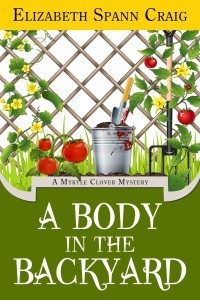
Tax time is making me a bit reflective this year. Maybe I didn’t have the time to reflect on Dec. 31st/Jan. 1 since I had a January 1 deadline…at any rate, I’m doing it now.
Tax time also always makes me think of ways I could improve. It’s great that I’m selling books—but I’ve missed opportunities along the way.
I thought I’d share my mistakes here in case you might find yourself in the same boat with some of these things. And mistakes are just opportunities to learn, after all.
Self-publishing mistakes I’ve made:
Waiting too long to venture into other formats. This is a big one, seeing the income I’ve made since July that I could have been making prior to that. Obviously, there can be some cost involved into moving into print (cover design and formatting, if you don’t do those things yourself) but audiobooks can be free. I’m a cautious person and basically waited until readers literally wrote me and asked me to put these books in audio and print format. I wish I’d moved earlier on this.
Not reserving my cover designer/formatter in advance. I’ve had to delay several releases because my cover designer or formatter was booked. Good contract labor gets booked up fast in self-pub. Ask early. Now I’m getting my covers done before I finish writing my books.
Giving readers a firm release date for my self-pubbed book too far in advance. Oh, this has bitten me several times now. When it comes to production, stuff happens. Sometimes people get sick, sometimes they have family emergencies. Sometimes they’re booked (see above). Sometimes they have internet issues. I have learned to add a week or so onto an estimated release date. Because readers will get in touch if the book isn’t out…ha! And it has an unprofessional feel to it when you miss a deadline you’ve made with a reader.
Not monitoring sales. Bad idea. If I’m having a slow month (a year ago, this was the case), then I can run a sale…play with pricing. If I don’t know I’m having a slow month, then I just get the sad little check 60 days later.
Not monitoring income/profits. Putting all our earnings in the same account as other income. This is also bad. If we’re making good income, we need to be thinking ahead: estimated tax payments in advance of tax time, money into our 401K/IRA, maybe have more withheld from our day job or our spouse’s day job. It’s no fun to pay a ton of taxes unexpectedly. And I’ve been informed that it’s very ill-advised to put your writing business income into your joint account/regular household account…it just doesn’t look great to the IRS, apparently. So maybe open a free regular checking account or credit union account that you only use for writing-related deposits. You can always transfer funds into your regular account afterward. And you can use your writing checking account to write checks for supplies, pay contract labor, etc.
Not outlining the next book in the series when finishing one. With the kind of gaps in self-publishing production that I’ve got to deal with as a hybrid writer (deadlines with the traditional publisher come first), this was a problem I’m now addressing. It takes far too long for me to get my head back into a series after working on a book in a different series.
Not having a newsletter. Readers had signed up for years for a newsletter that I didn’t ever send out. That wasn’t smart. I finally corrected this last year. If they are going to our website and taking the time to fill out the registration form for our newsletter…we should send the thing out to them.
Not doing Goodreads giveaways for the self-pubbed books. This promo thing worked out well for my traditionally published books. Why didn’t I do it for my CreateSpace Myrtle Clover books? Still haven’t done this, but need to fix that soon. It simply means ordering however many CreateSpace books I need for the giveaway and then getting it listed on Goodreads.
No website extras for readers. I’ve heard reader chatter about other writers’ websites and some of the extras they’ve seen on them. Hmm. I just haven’t gotten around to that yet. I did do a preview chapter for one of my books on the website. It would probably be helpful if I did it for the upcoming book. This is a static form of promo—you stick it up on your website once and then you’re done. Much easier than some of the social media networking we’re encouraged to do. And the one chapter I put up had readers interested, judging from feedback I received from them.
Not ramping up my self-pubbed content earlier. I seemed to view my first self-pubbed book in 2011 as a one-off.
Not venturing into self-pub until late in 2011. Yeah. Should have been early 2010. I had a book ready to go.
Not asking for my rights back (or confirming that I did hold those rights) earlier. The reason I didn’t venture into self-pub earlier (as I mention above) is because I wasn’t sure how to get my rights back to the series or the characters. The first book was traditionally published, but I wanted to self-publish others for the series. I got my rights back in a short email exchange with the publisher…took about 10 minutes for me to pen the email and took the publisher about 10 minutes back. Definitely should have explored that earlier.
There’s always room for improvement…I think last year was also the first time when I realized that this really is a small business I’m running. I have contract labor. I have legal and professional help. I’ve got research and development for books. There are areas that I’m not good at and I’m either working to learn more/do better with those or subcontract out for the things I really can’t do.
So these are the things I’d advise to keep an eye on for any writers interested in self-publishing. What tips have you got?
The post Self-Publishing Mistakes appeared first on Elizabeth Spann Craig.
February 2, 2014
Resources for the Do-It-Yourselfer
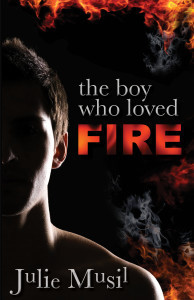
My hubby and I are die-hard do-it-yourselfers. The home we live in now sits on what used to be nothing but acres of wide open dirt and scrub oak. We brought utilities here. We built the house ourselves. Heck, I even helped paint the exterior of our house while carrying my 9-month-old son in a baby backpack. Yes, we’re crazy like that.
Call me psychotic, but I have a hard time paying someone to do what I can do myself.
When I decided to indie publish my novel, I took the same approach. Aside from hiring a freelance editor (A Little Red, Inc.) and cover designer (J. Allen Fielder), I did the whole project myself. In my opinion, editing and cover design are tasks for the pros. Some would say the same about painting the exterior of a house, but we won’t worry about that now :)
I scoured the Internet and blogs for resources. Here are some of my faves:
Indie Author Survival Guide, by Susan Kaye Quinn: Susan’s blog is a treasure trove of information, so definitely stop there first if you’re considering indie. Susan’s post about Making the Leap is what gave me the final push I needed to get my book out there. Indie Survival Guide drills deep into the nitty gritty details of what you need to do to indie publish. Formatting, paying formatters to avoid headaches, which markets to upload to and why, etc. Plus, this book is inspirational. Seriously, start with Susan.
Self Publishing Attack, by James Scott Bell: I’m a huge fangirl of Bell’s craft book, Plot & Structure. I admire his no-nonsense, regular-guy style. In Self Publishing Attack, Bell teaches indie authors how to put out a professional product, and how to treat your new venture as a business.
From Pages ’09 to Kindle Format in Minutes, by Garrick Staggs: I could’ve paid someone to format my book, but I was determined to learn how to do it myself. Sort of the “teach a man how to fish” thing. Most formatting help is geared toward Word, but I use Apple Pages. Staggs’ book helped with the language barrier. And get this—when I encountered a sticky formatting issue, I emailed the author directly (he gives his email at the end of the book for this purpose). He emailed me back and helped me work through the issue. More proof that writers are some of the most generous people I know.
Smashwords Style Guide: A great place to start if you’re formatting your own book. It’s full of useful advice on how to format a clean document. I used many of the tips in this guide until I came to a Pages roadblock. Then I picked up with the Pages to Kindle book.
Building Your Book for Kindle: Additional details on specifics such as uploading your book, previewing your book, and uploading a changed manuscript.
Forums: With every problem I encountered, someone else had already posted about it in a forum. I read the responses and was good to go. For KDP forums (Amazon), click here. CreateSpace forums (print) can be found here.
Wordpreneur Peeps: 107 Successful Indie Publishers (including Elizabeth!): If you think indie publishing can be overwhelming, or that you don’t have what it takes, I know how you feel. This book features Regular Joe writers, people just like you and me, who jumped into indie publishing. Totally inspiring.
Time is precious. Money is precious. We must use both wisely. Will this psychotic do-it-yourselfer ever pay someone to do all the work for me? I won’t rule it out. Will I ever hire a painter to paint the exterior of my home? Well, my 9-month-old son is now 16. We can paint side by side, don’t you think?
Are you a do-it-yourselfer? Have you indie published? Did you do the work yourself or did you sub it out? Please share your favorite resources in the comments!
Julie Musil writes Young Adult novels from her rural home in Southern California,

where she lives with her husband and three sons. She’s an obsessive reader who loves stories that grab the heart and won’t let go. Her novel The Boy Who Loved Fire is available now. For more information, or to stop by and say Hi, please visit Julie on her blog , on Twitter , and on Facebook .
Buy Links for The Boy Who Loved Fire
The post Resources for the Do-It-Yourselfer appeared first on Elizabeth Spann Craig.

